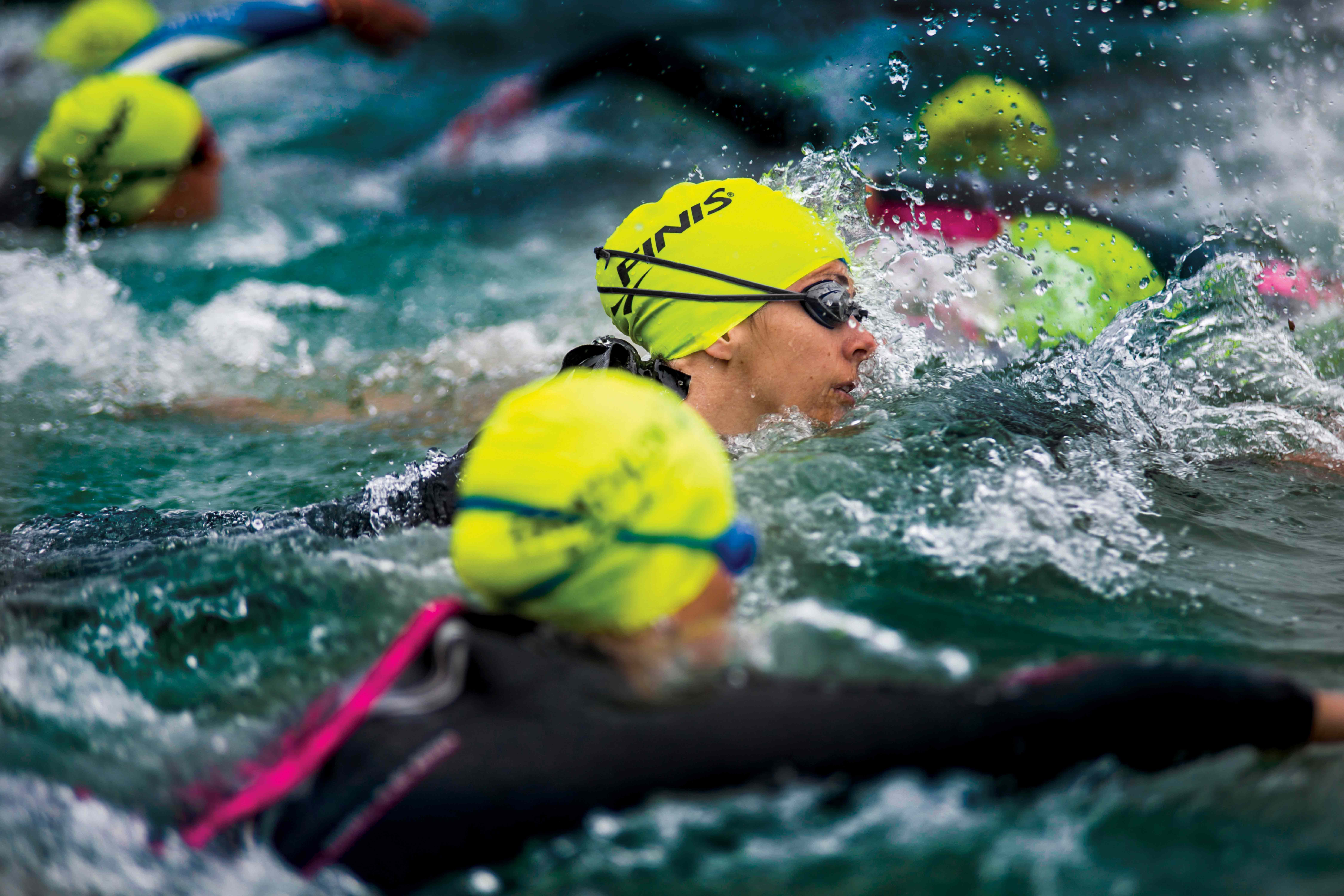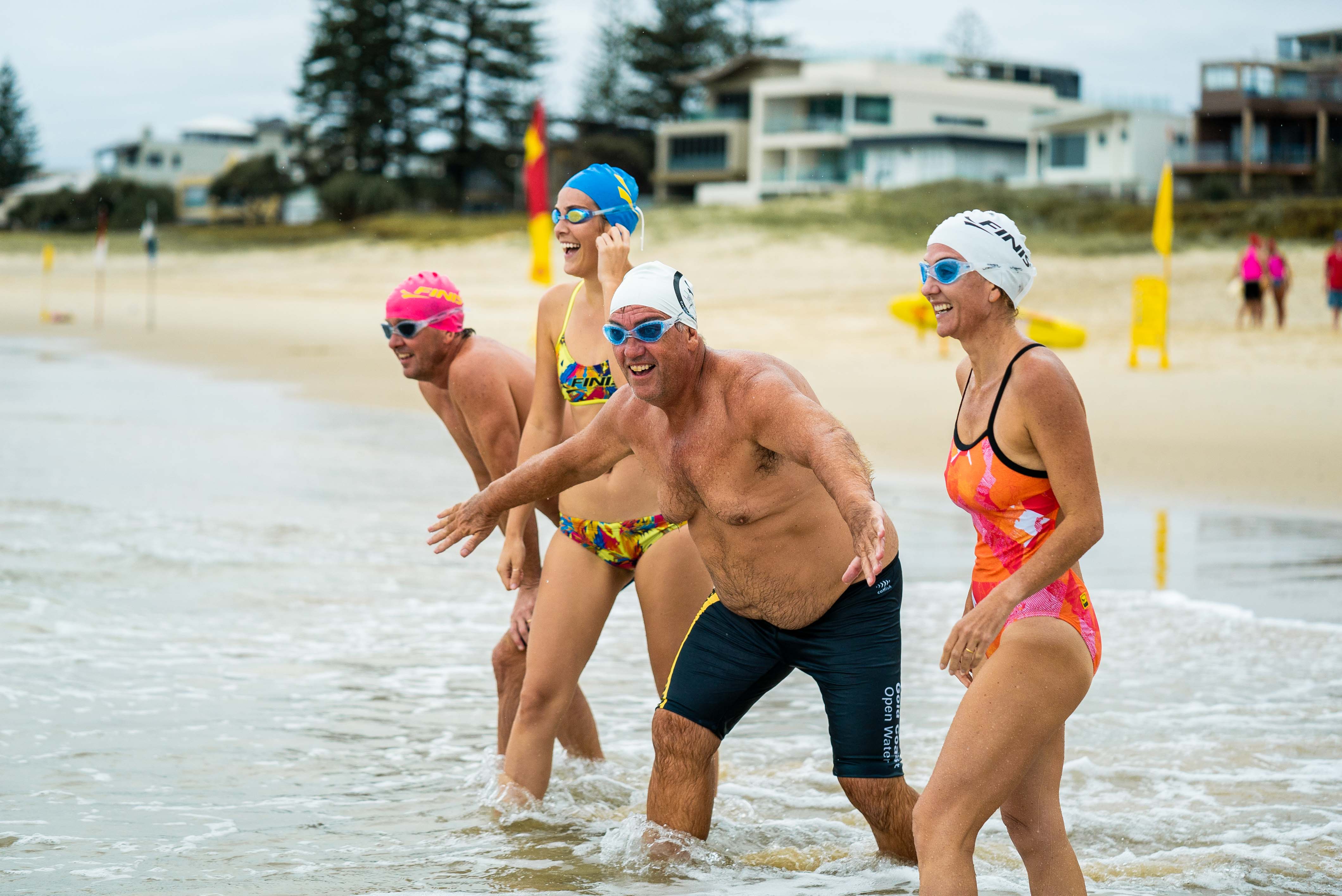Chlorine to Salt: A Day in the Life of Open Water Swimming
Kate Santilena, Swimming World College Intern.
February 9, 2019
Imagine swimming without staring down a black line on the bottom of the pool for hours on end and obstacles are constantly fighting against you, such as a powerful ocean current or repeated collisions with a competitor, and races that last grueling lengths of time. These are just a short list of things that open water swimmers face when they compete. Open water swimming is a well-known portion of the sport that many swimmers do not experience.
Here are some things to expect when competing in open water races.
No More Black Line Swimming

Photo By: Becca Wyant
Although swimming itself can be a very aerobic based sport, open water swimming requires an incredible amount of endurance. There are no walls to worry about; instead, vast amounts of open ocean will test their skill and toughness. If one is interested in open water races, it is a good idea to train a bit in the ocean where one can gradually get used to the ever changing ocean. If you don’t have access to the ocean, a fresh water inland lake is a great option; however, not all lakes allow open water swimming, so be sure to check the rules. Safety first!
Barriers other than the Great Barrier Reef

Photo By: Becca Wyant
Open water swimmers might know the course and their competitors, but no two races are ever the same. Swimmers face obstacles like the altering current, vision difficulties, the inability to clearly sight the course or buoys, and the taxing physical side of every race. Open water competitors bumping, hitting, and drafting off one another proves to be an extreme element that accompany all of these races. Knowing one’s competition and when to react to make a move is a key component to a successful open water race. However, do not be surprised if you end the day with a black eye or a couple of bruises.
What to Expect

Photo By: Becca Wyant
Unlike racing in a pool, open water racing is a very physical sport as mentioned before. Expect that you will get knocked around by more than just the ocean during a race. There are also many choices to be made in an open water race, including who to swim by and for how long. Another side to open water swimming most pool swimmers might relate to but not to the same extent is chafing! Swimming for miles and miles in a suit that is constantly moving will result in the discomfort and the pain of chafing. Coming prepared to an open water race with a tub of Vaseline might not be enough to stop chafing completely, but anything helps.
Safety First

Photo By: Becca Wyant
When open water training, there are some things each competitor should be aware of to stay as safe as possible. What they say about the ocean being unexpected can be very true with these grueling races. When racing, be familiar with the course before starting. Many open water races are not just a straight shot to the finish. There are buoys to swim around, competitors to maneuver between, and reefs that can come up abruptly. Having some knowledge of what is to come can save a lot of swimmers. Even the most experienced open water racers can have something happen that puts them in danger.
Another factor to be aware of besides the race and competitors is that you are not alone in the water. Jellyfish, reefs, and other ocean creatures are sharing that same space. Always be aware of these unexpected visitors and know how to avoid if possible. There are always safety measures in place during open water races, including lifeguards that are there to help if needed. If something is feels off or something happens, use these safety precautions!
Some of the Greats
Like every sport, open water swimming have its own legends who contribute, promote, and prove their passion for the sport. Just to name a few, competitors like Fran Crippen – who passed away while competing in an open water race due to health problems – to this day is a figurehead of open water racing. Haley Anderson placed second in the 10-kilometer open water race in the 2012 Olympics. Maarten Van Der Weijden competed and won multiple titles in the Olympics and to this day is competing and reaching incredible heights in the vigorous sport of open water swimming. No matter if you are a G.O.A.T or just starting out, each open water athlete makes their own mark on the rough sport.

Photo By: Becca Wyant
Open water races are swum all around the world in places like Australia, Hawaii, Spain, Argentina, California, etc., which bring different challenges and courses with each location. All of these races have various distances ranging from a mile (1.6km) to as long as 30 miles (48km)! Open water swimming is a whole new level of the sport and brings about obstacles that many pool swimmers are not aware of. Being a fairly young sport, open water swimming has room to grow and expand but still proves to be a significant part of the sport of swimming.
Recent Articles
Dylan Carter
Chelsea Hodges
Lorenzo Zazzeri

Introducing the Stability Snorkel Jr
Share on Social Media


